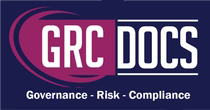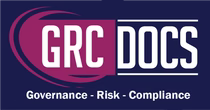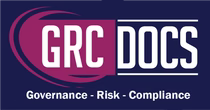When Was NIST 800-53 Created?
The NIST Special Publication 800-53 is a comprehensive set of security controls and guidelines developed by the National Institute of Standards and Technology (NIST) in the United States. These controls provide a framework for organizations to assess and improve their information security posture. But when exactly was NIST 800-53 created? In this article, we will explore the history of the NIST cybersecurity framework 800-53 and delve into the reasons behind its creation. Understanding the origins of this important publication will not only shed light on its importance but also provide valuable insights into the evolution of cybersecurity standards. So, let's dive in and explore the journey of NIST 800-53!

What Is NIST 800-53?
When Was NIST 800-53 Created?
The National Institute of Standards and Technology (NIST) Special Publication 800-53, also known as "Security and Privacy Controls for Federal Information Systems and Organizations," was first created in 2005. This publication provides a comprehensive set of guidelines and recommendations for federal agencies and organizations to protect their information systems and safeguard sensitive information. The initial version of NIST cybersecurity framework 800-53 was developed through collaboration between NIST and the Department of Defense (DoD). It was specifically designed to address the unique security requirements of federal information systems and to establish a common framework for federal agencies to manage and mitigate their cybersecurity risks.
Since its initial release, NIST 800-53 has undergone several revisions and updates to reflect changes in technology, evolving threats, and lessons learned from various cybersecurity incidents. The most recent version, Revision 5, was published in September 2020 and includes significant updates to address the rapidly evolving cybersecurity landscape. NIST 800-53 has become a widely adopted cybersecurity framework, not only within the federal government but also in the private sector. Many organizations look to NIST 800-53 as a best practice guide and a benchmark for their own cybersecurity programs. Overall, the creation of the NIST cybersecurity framework 800-53 has played a crucial role in establishing a standardized approach to cybersecurity across federal agencies and organizations, helping to enhance the overall security posture of the nation's information systems.
Development of NIST 800-53
The development of NIST 800-53 is a critical component of the National Institute of Standards and Technology's (NIST) ongoing efforts to ensure the security of information systems and protect sensitive information. The NIST Special Publication 800-53, also known as "Security and Privacy Controls for Federal Information Systems and Organizations," provides a comprehensive set of controls that organizations can implement to protect their information and information systems. The development of NIST 800-53 is a collaborative process that involves input and feedback from various stakeholders, including government agencies, industry professionals, and the public. This ensures that the controls are relevant, effective, and adaptable to the ever-evolving threat landscape.
The process begins with the identification of emerging security and privacy requirements, which are gathered from various sources, such as evolving cybersecurity threats, changes in technology, and lessons learned from previous incidents. These requirements are then analyzed and categorized to determine their impact on information systems and the level of risk they pose. Based on this analysis, a draft version of NIST 800-53 has been developed, which includes the controls and guidelines that organizations should implement to mitigate the identified risks. This draft is then subjected to a rigorous review process, which involves extensive feedback and public comment.
Once the draft is finalized, it is published as a NIST Special Publication and made available to organizations for implementation. The publication includes detailed guidance on how to select, implement, and assess the controls, as well as templates and resources to facilitate the process.
Key Components of NIST 800-53
The National Institute of Standards and Technology (NIST) provides guidelines for securing information systems through the publication of the NIST Special Publication (SP) 800-53. This framework outlines the key components that organizations should consider when implementing an effective information security program. There are several key components of the NIST cybersecurity framework 800-53 that organizations should be aware of:
- Risk Assessment Process: Identification, evaluation, and prioritization of potential risks to information systems. Conducting thorough risk assessments to identify vulnerabilities and implement appropriate controls.
- Security Awareness and Training Program: Educating employees on the importance of information security. Providing training on identifying and responding to potential threats. Conducting regular training sessions and awareness campaigns.
- Access Control: Implementation of strong access controls to restrict unauthorized access to sensitive information. Measures such as multifactor authentication, role-based access controls, and regular audits of user access privileges.
- Continuous Monitoring: Establishing processes for regular monitoring of information systems for threats and vulnerabilities. Implementing automated monitoring tools and conducting security assessments. Promptly addressing identified weaknesses or issues.
- Incident Response and Recovery Planning: Developing well-defined plans for responding to and recovering from security incidents. Procedures for incident reporting, investigation, and remediation measures.
Strengthening Security Frameworks with NIST 800-53 Controls
The NIST 800-53 framework is a cornerstone of federal and enterprise cybersecurity programs, providing a comprehensive set of security standards designed to protect organizational systems, data, and infrastructure. Developed by the National Institute of Standards and Technology (NIST), these controls guide organizations in managing risk and maintaining compliance across multiple operational domains.
1. NIST 800-53 Controls Overview- A NIST 800-53 control defines specific safeguards and countermeasures that help organizations secure their information systems against threats and vulnerabilities. These controls are structured across families that cover essential aspects of security, including access control, auditing, incident response, and system integrity. Each control serves as a building block for achieving compliance and ensuring consistent application of security best practices.
2. Configuration Management- Configuration management is one of the most critical control families within NIST 800-53. It focuses on maintaining the integrity and consistency of systems through proper configuration baselines, version control, and change management processes. By implementing effective configuration management, organizations reduce the risk of unauthorized system modifications that could lead to vulnerabilities or data breaches.
3. Physical and Environmental Protection- The physical and environmental protection controls safeguard facilities, hardware, and personnel from physical threats. This includes access restrictions, surveillance, fire protection, power supply monitoring, and environmental controls such as temperature and humidity regulation. Together, these measures ensure that physical assets supporting critical systems remain secure and operational.
4. System and Services Acquisition- The system and services acquisition control family ensures that security is embedded into the lifecycle of IT systems—from procurement to deployment. Organizations are required to define security requirements, assess vendors, and verify that new systems meet established security standards before integration.
5. System and Communications Protection- Finally, system and communications protection controls focus on safeguarding data during transmission and within operational systems. Encryption, network segmentation, and boundary protection are key measures that prevent unauthorized access and ensure data confidentiality and integrity.
Conclusion
NIST cybersecurity framework 800-53 was created in 2005 as a comprehensive set of security controls and guidelines for federal information systems. It has since been revised and updated several times to address emerging threats and technologies. To ensure the security of your organization's information systems, it is crucial to familiarize yourself with the latest version of NIST 800-53 and implement its recommended controls. Visit the official NIST website for more information and resources.





